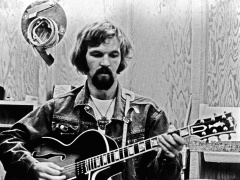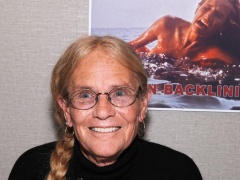
Sandra Day O’Connor, the first woman to serve as a Supreme Court Justice, died on Friday, the Supreme Court announced in a statement. She was 93.
O’Connor died in Phoenix, Ariz. from complications related to advanced dementia and a respiratory illness.
Appointed by former President Ronald Reagan in 1981, O’Connor retired from the court in 2006. A moderate conservative, O’Connor sat in the center of the court and oftentimes cast the deciding vote in important cases. She wrote the majority opinions for Grutter v. Bollinger, a landmark affirmative action case, and Hamdi v. Rumsfeld, which ruled that the U.S. does not have the power to hold an American citizen indefinitely without due process protections. O’Connor also contributed to the majority opinion on Bush v. Gore, which settled the recount dispute in Florida during the 2000 presidential election.
Born Sandra Day in El Paso, Texas on March 26, 1930, O’Connor grew up on a cattle ranch and was accepted to Stanford University at just 16 years old. She then attended Stanford Law School, where she met John Jay O’Connor III. The two married on her family’s ranch in 1952.
After graduating from law school, O’Connor had difficulty finding a job in the profession due to her gender. She eventually offered to work as a deputy county attorney in San Mateo, Calif. for no salary. When her husband was drafted, she relocated to Germany with him, where she worked as a civilian attorney for the Army. The couple returned to Arizona in the late ’50s and had three sons, Scott, Brian and Jay.
once settled in Arizona, O’Connor became the assistant attorney general for the state from 1965 to 1969. She was then appointed to the Arizona Senate, where she became the first woman to serve as any U.S. state’s majority leader. In 1974, she was appointed to the Maricopa County Superior Court, and was eventually promoted to serve on the Arizona State Court of Appeals. In 1981, Reagan nominated her to the Supreme Court. Despite conservative backlash, O’Connor was unanimously confirmed by the Senate and made history as the first woman Supreme Court justice.
O’Connor’s voting pattern was often unpredictable, as she opted to decide on a case-by-case basis instead of sticking to any particular ideology. For example, though she criticized Roe v. Wade during her Senate hearing, O’Connor co-authored the opinion on Planned Parenthood v. Casey, in which the court upheld the right to have an abortion prior to fetal viability. And, though she often voted in favor of religious institutions, she was passionate about keeping the separation between church and state, supported by her vote in Lee v. Weisman, where the court ruled that prayer at a graduation ceremony violated the establishment clause.
O’Connor retired from the court in 2006 at the age of 75 to take care of her husband John, who had been diagnosed with Alzheimer’s. He died in 2009. That same year, she received the Presidential Medal of Freedom from President Barack Obama.
After retiring, O’Connor remained active politically and philanthropically, advocating for judicial independence and founding the Sandra Day O’Connor Institute, which works to promote civic discourse and engagement.






